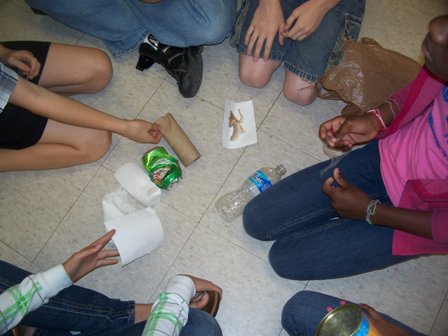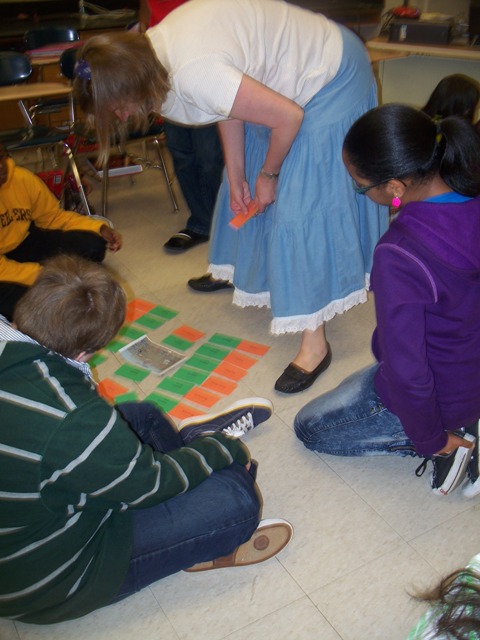

Ocean And You, 2630 Carisbrook Dr, Oakland, CA, 94611
Cynthia@OceanAndYou.com 510-808-4075
|
Ocean and You
science - education - storytelling |
| Home | Science | Storytelling | Gallery | Resources | About "Dr C" |
|---|
|
Responsible Consumerism and the Legacy of Marine Debris How long will it last? Trash in the ocean can last for hundreds, even thousands of years. When we help kids understand these long time periods, they can better appreciate the impact of their own actions. In this exercise, kids compare the decay times of marine debris with historical markers. Preparation: Several posters list the decay times of marine debris - they vary in format but not in content. Please note that all posters incorrectly state that styrofoam cups last 50 years; the reality is probably more than 500 years. Choose one or more of these posters:
Now collect examples of the various items on your poster. I'd suggest using pictures of banana peels or other food items, and also pictures of glass bottles instead of the real thing. If you do use the real thing, plan to extend the grossology part of your lesson. To help kids understand the meaning of long times like 50, 200 and 600 years, I have created these cards. Part of our legacy to the future is trash - these historic references help kids consider better legacies. Activity: Divide your kids into smallish groups, and have them discuss different materials and how long they might last in the ocean. You may wish to remind them that paper dissolves, metal rusts, and plastic does neither. Show them the historical cards, and demonstrate laying out a timeline on the floor. Pass out bags of trash, and ask the kids to sort the trash along their timeline. Things they expect to last 50 years in the ocean should go with the picture of the Woolworth sit in, etcetera. Encourage them to articulate their thought processes. Now read off the decay times from the poster, and have the kids re-order their trash as appropriate. I like to make a bit of drama here. For example, I like to quote the first few lines of "Canturbury Tales", in the original. The kid all give me a "say whaaat?" stare, and I say, "600 years ago people talked so differently, we couldn't understand them today. We have no way to imagine what the world will be like in 600 years, but our fishing line will still be around. Is that the legacy you want?" What can I do? The bottom line should not be negative, but hopeful. Kids actually do have a good bit of power, especially through their consumer choices. Be sure to tell the good part of the story - the changes in manufacture of six pack holders. These linked rings used to be the primary cause of marine entanglement, and they lasted hundreds of years in the ocean. Because customers complained, bottling companies made a new kind of six pack holder, that photo-degrades in less than a year. Always tell kids they have the power to:
Related Activies: I like to combine this exercise with a discussion of the impact of debris on marine animals. A piece of cellophane in a bottle of water makes a pretty convincing "jellyfish", and there are plenty of pictures of turtles eating plastic bags online. Consider how much you want to scare your audience; I've chosen to show the kids the contents of albatross stomachs, but not seals being decapitated by fishing line. Roseanne Fortner showed me this superb visioning exercise in which kids build maps around the central concept of beach trash. I usually follow my trash sorting with this.
Resources: video, kits and lesson plans
|